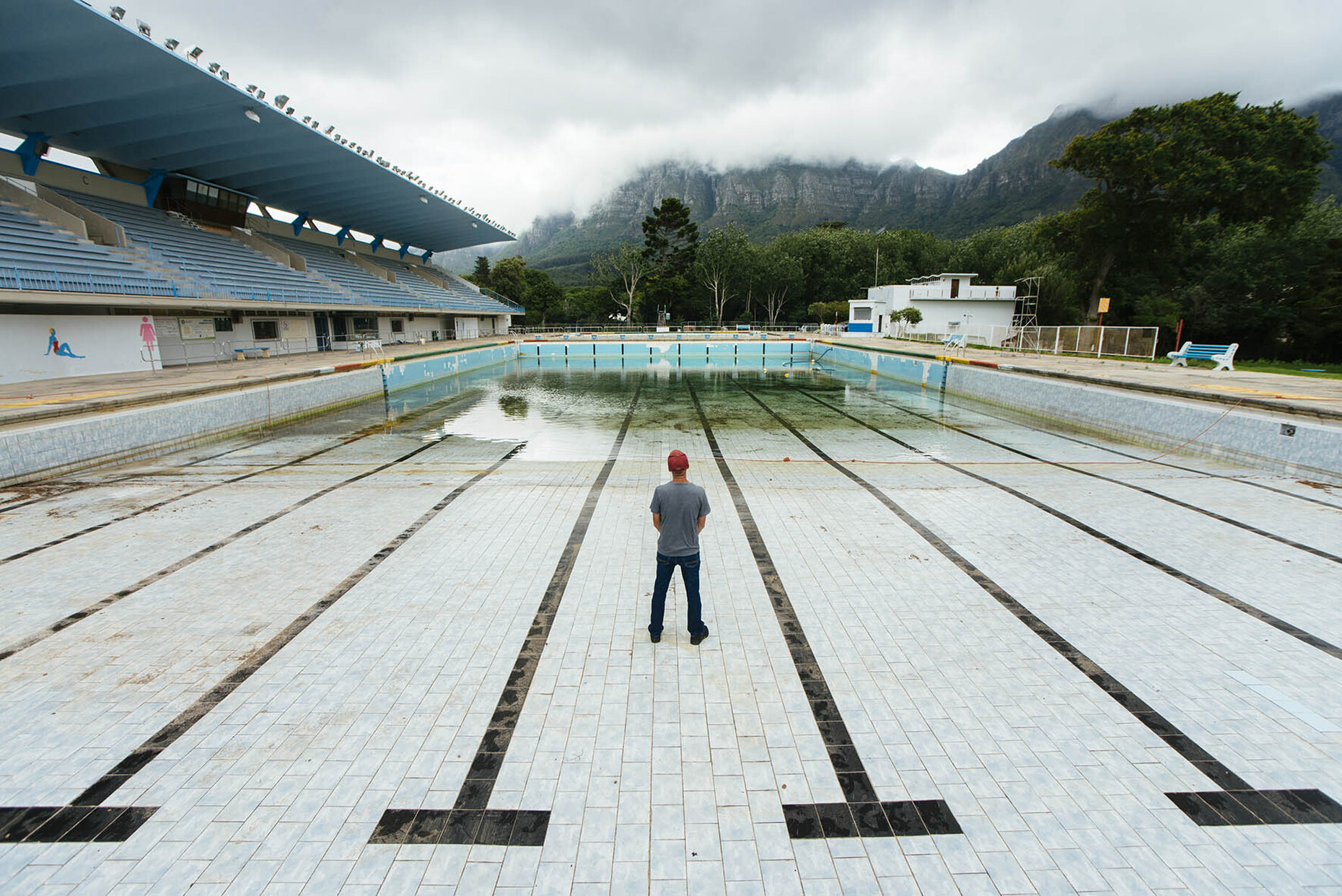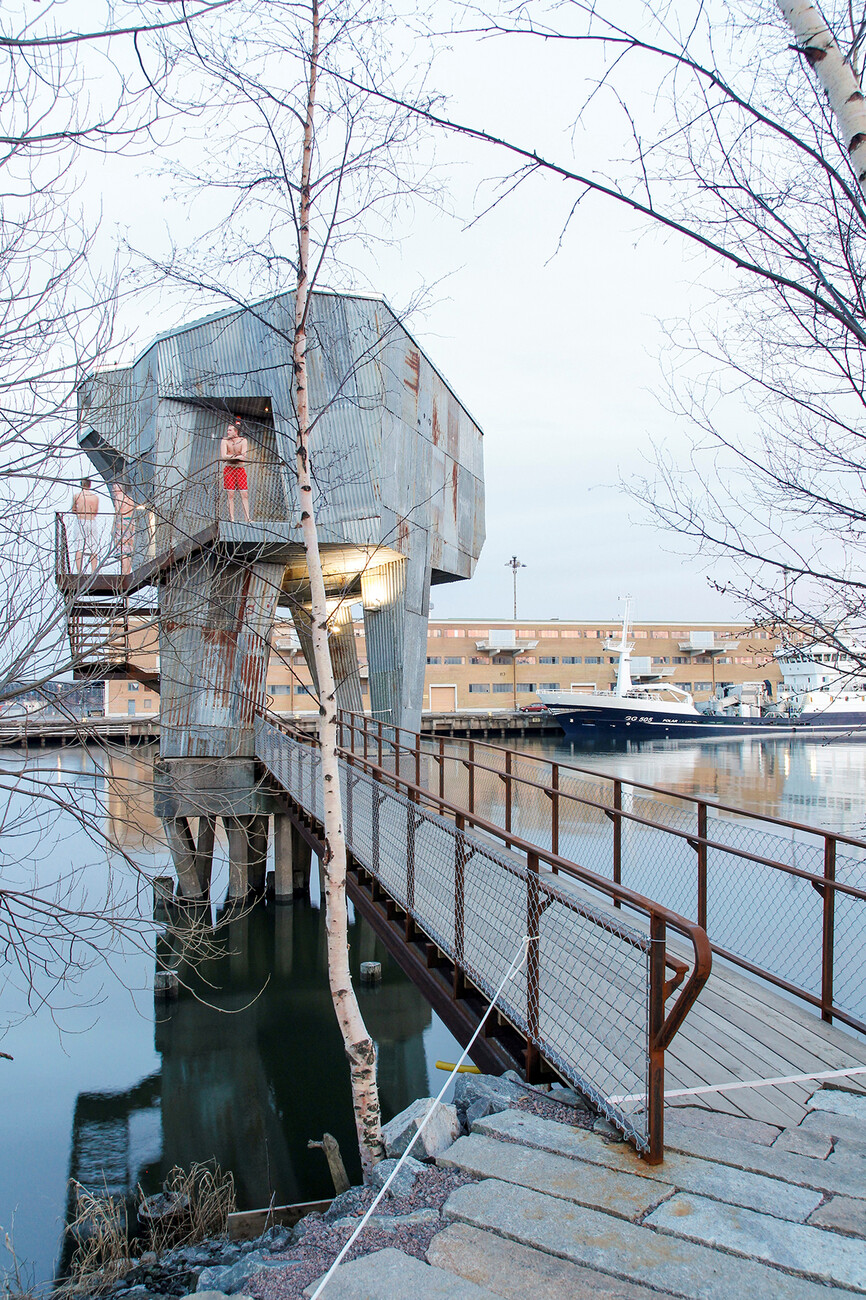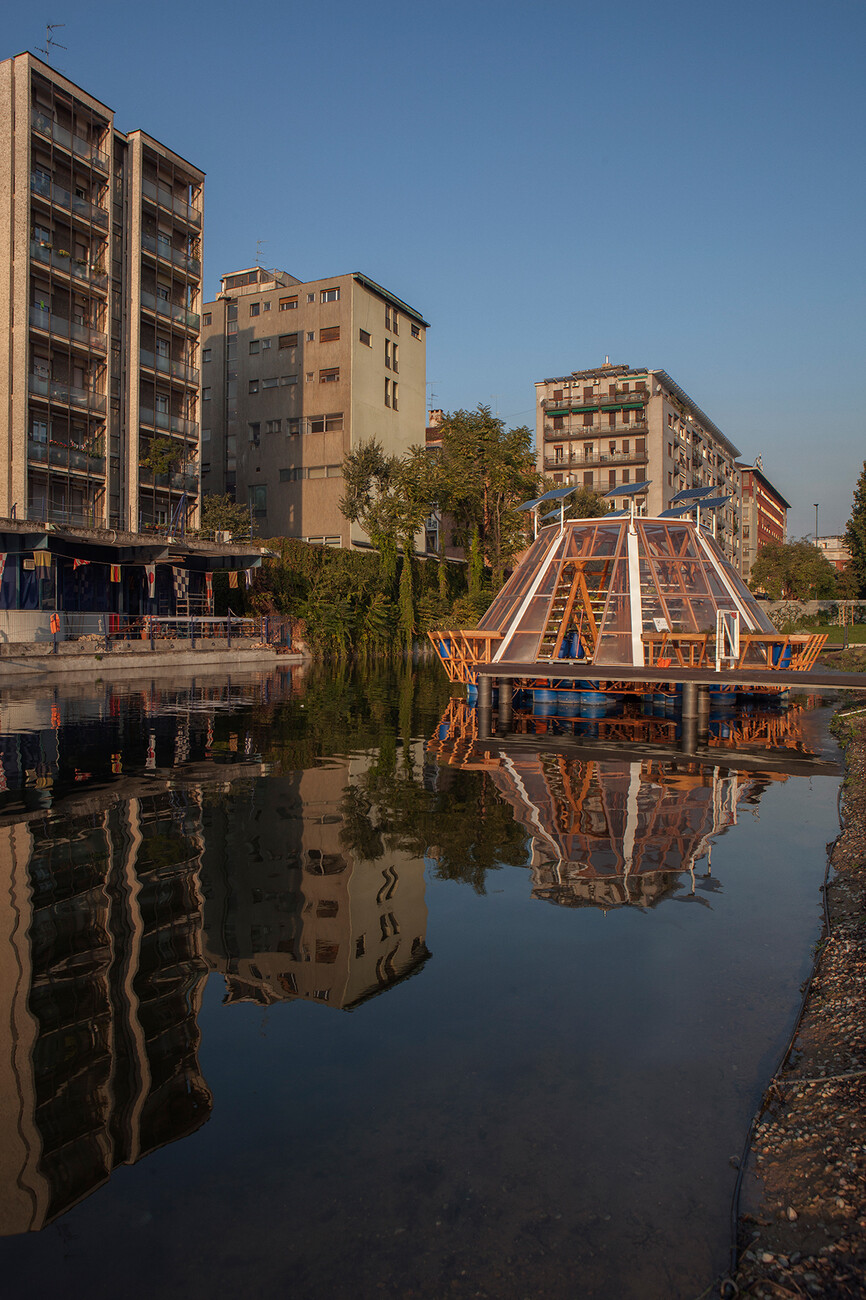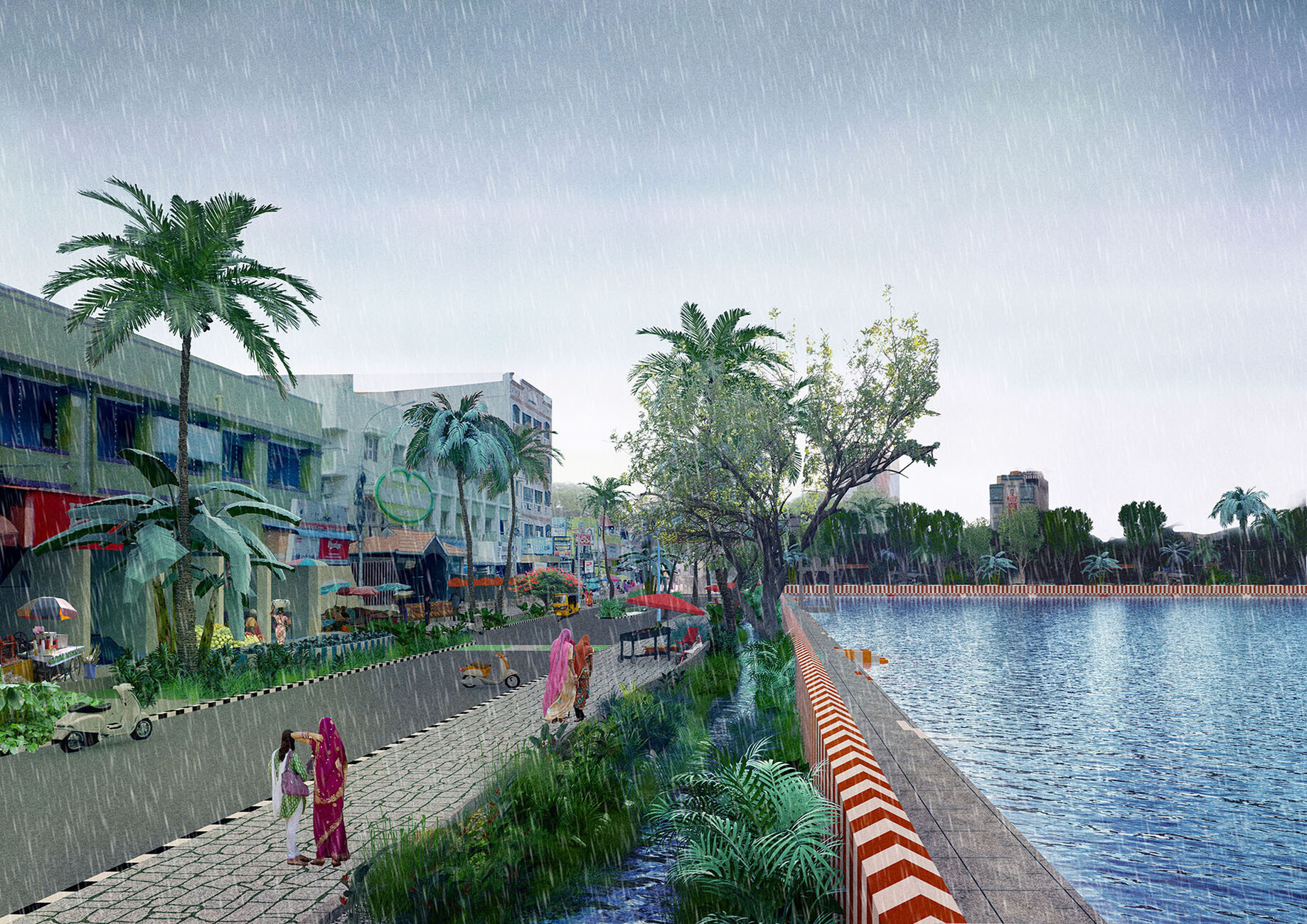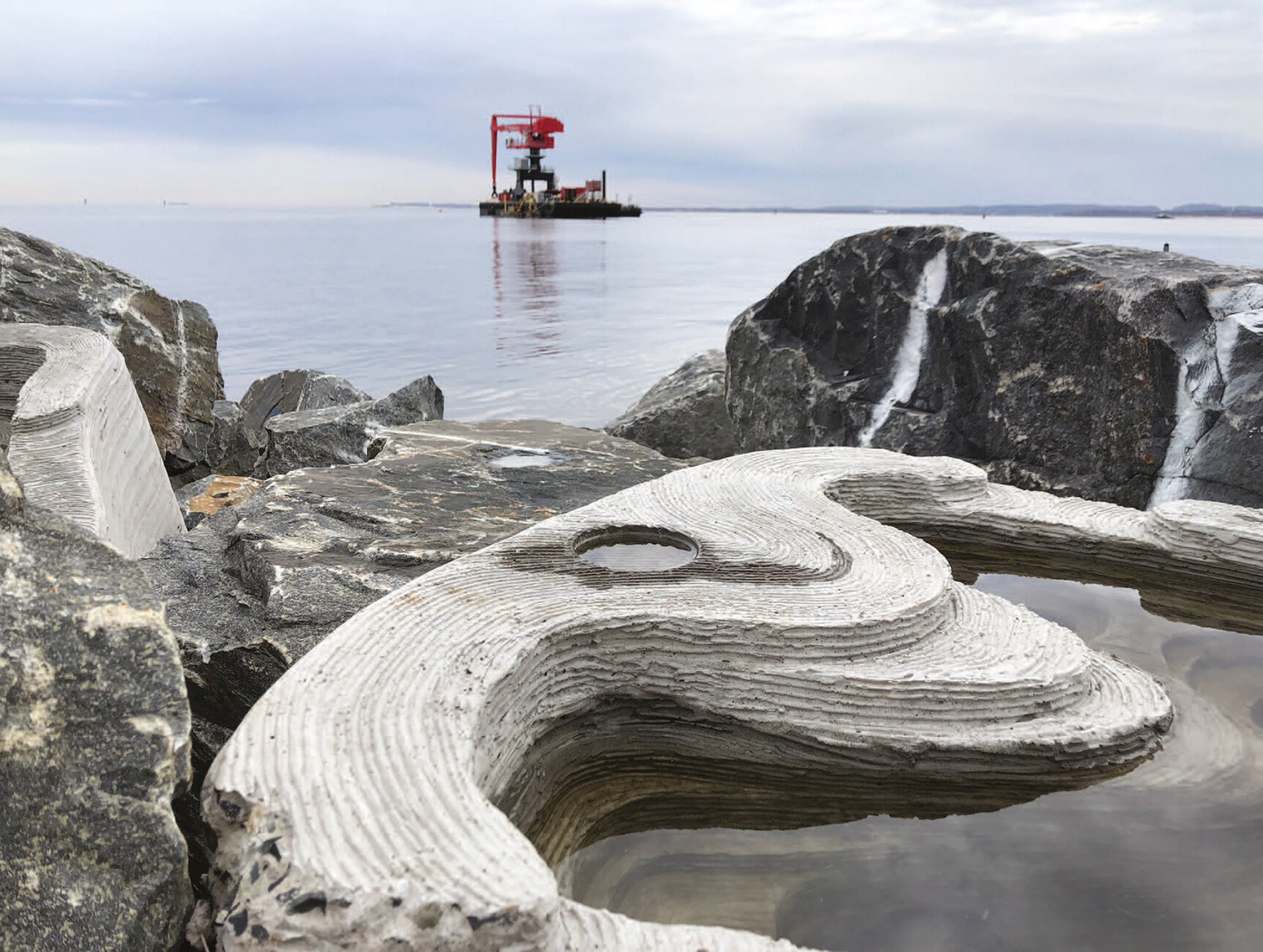The Power of Water
Anna Moldenhauer: The exhibits cover a broad spectrum of topics, from our strong bond to water as a resource to its powers of destruction. How did you go about selecting the items to display?
Jane Withers: Today we face a global water crisis that is largely due to our mismanagement of water and vast over consumption. The idea behind Water Pressure is to bring together ideas and solutions from across design, science and activism that offer new perspectives on the challenges of water. We want the exhibits to help visitors appreciate the huge scale of challenges we face but also to understand the potential to create a new water culture, one that treats water more responsibly and more sustainably. Which is why in the exhibition’s opening room we begin by outlining the premise under the heading of “Water Stories”: As a modern society we have lost our cultural ties to water. It is piped invisibly as it were into our lives, which is an incredible luxury but this has also contributed to a situation where we no longer understand our place in the water ecosystem. The first part of the exhibition is a rich collage that offers insights into the stories, the mythologies, the spiritual practices, and ecological knowledge relating to water from different eras and cultures. In the Global North our focus on water is predominantly a very narrow industrial, technological and even economic one. Here we want to fire people’s imagination as regards water and sensitize visitors to other ways of viewing the medium.
This also includes regaining an appreciation of traditional ecological knowledge such as the Indonesian Subak system, a cooperative water management system of canals and weirs, that dates back to the 9th century. Or Middle Eastern Q’anats – underground aqueducts used to transport water from aquifers and wells, a system that has been in use for thousands of years. We likewise underscore the destructive powers of water, for example representations of floods and tsunamis from Noah’s Arc to the famous Katsushika Hokusai woodcut “The Great Wave off Kanagawa”. Although we all know images like these, we fail to translate these warnings into our contemporary world and are surprised by and underprepared for extreme weather events, There are also stories that prompt a new understanding of water – for example, in 2017 the Whanganui River in New Zealand was recognized as a legal person with corresponding rights because in the cultural understanding of the Māori no one can own it as property. It is high time we gave water its due respect again and demand water justice for all species and not just for human beings.
The data and facts on the global water crisis show very clearly how dramatic the situation is, and yet we largely continue to be wasteful in our use of water. Why is that?
Jane Withers: We have not adapted either our approach to water or our systems and infrastructures to the current situation. Many of our practices no longer make sense in an age of scarce resources and climate change. Why do we waste rainwater and instead let if flow away into drains? Why do we flush toilets with drinking water? Design is capable of offering new ideas. The four chapters at the heart of the exhibition – Bodily Waters; Invisible Waters – Agriculture and Industry; Thirsty Cities, and Ecosystems – Land and Ocean focus on responses to some of these critical water issues. Every human being needs access to clean water, to sanitary facilities, and yet despite the UN recognizing access water as a human right in 2012 we are still far from achieving this - around two billion people still don’t have access to clean drinking water, and around 1 and a half billion lack basic safe sanitation. We have a situation in which the few fortunate ones among us who have access to drinking water also use it to flush away human waste. That is a waste not just of water but also of potential fertilizer. Ten years ago, alternative approaches already existed but there was a reluctance to actually realize them. To show how this area has evolved we have dedicated quite an extensive section in the chapter Bodily Waters to circular systems for wastewater that work at the scale of a home, a building and an urban neighbourhood.
Did the one or other idea from the world of design and architecture for protecting water as a resource that you came across when researching the show really surprise you?
Jane Withers: There are so many. “The Topography of Tears” by Rose-Lynn Fisher is a marvelous piece: The artist took -photographs under magnification of ttears that were shed out of different emotions such as anger or compassion or tears caused by cutting onions. It is a poetic way of visualizing our bodily waters and offers us a new perspective on this curious physical/emotional phenomenon. I also find a project for a wastewater garden in Iraq’s Mesopotamian Marshes inspiring ; Here the discharge un untreated sewage has led to disease and polluted the fragile marsh ecosystem.The project Eden In Iraq relies on nature-based systems and plants to purify the wastewater and the design of the garden references traditional textile designs. Last year, The Dry Collective headed by project curator Arja Renell was presented in the Venice International Architecture Exhibition in the Finnish Pavilion in the form of “Huussi – Imagining the Future History of Sanitation”. It was a fictitious retrospective looking back from the year 2043, and in it toilets with water flush systems are a relic from an age of resource wastage and instead human nutrients are recycled into the food production system. Their campaign ‘Death to the Flushing Toilet’ is intended as a provocation urging us to rethink our current systems,
Jane Withers: Exactly.
Are designers and scientists not interdisciplinary enough in their work to come up with solutions for the global challenges relating to water?
Jane Withers: Of course some already are, but for many it is not easy to access scientific partners and accurate data and understanding of complex water issues.. Which is why we are trying to create platforms of cooperation such as the one-year program “Water Futures” in New York City in 2018–9, which I curated. In that context we brought together different disciplines and organizations to discuss the topic of water scarcity and pollution in order to explore the multidimensional relationship between drinking water, life in the city, and its future possibilities. The interaction between water experts who can explain the linkages, and designers, who can develop the tools to tackle the problems, spawned new ideas. As a design historian and curator I view the topic through a particular lens, as do the water scientists. Which is why we always opt for long-term collaboration in order to make ideal use of our different areas of expertise and views.
Water, on the one hand, means life, and yet, on the other, can spell death. How can design help to provide better protection against flooding and restore the balance that humans have largely themselves destroyed?
Jane Withers: There are projects which try to work with the power of water and not against it, that do not attempt to control water but rather give it space. One example is the historic Enghavepark recently reimagined by architectural practice Tredje Natur as the largest climate project in Copenhagen. It features water reservoir that as well as creating an intriguing watery landscape that varies with the seasons, becomes a a 22,600-cubic-meter detention tank to protect the city against flooding in the event of extreme rainfall. When thinking about urban water we should always onboard architects and landscape architects as an important part of the team. We must think about how cities absorb water in the context of the increasing incidence of extreme weather events. Simultaneously, projects can be initiated that as well as protecting against drought and flooding use water imaginatively in the public realm.
Instead of straightening river courses and thus making flooding more likely.
Jane Withers: Yes, that’s also an aspect. In the chapter Ecosystems there is a phenomenal infographic showing that only one-third of the world’s 246 longest rivers are still free-flowing over their entire length. A free-flowing river can naturally swell or shrink, leading to benefits like fertile floodplains and groundwater recharge. In the first room of the exhibition Water Stories we have a soundtrack from a pioneering ‘rewilding ‘ project at Knepp, an estate in West Sussex in Great Britain. About 2 years ago, a pair of beavers were resettled there by a brook. Beavers are ecosystem engineers and their dams have already transformed the small seasonal stream that would sometimes run dry into a complex wetland. The radio station “Wilding Radio” was started so that people can listen into the burbling sounds of the brook and nature rewilding 24/7. This delightful piece invites visitors to contemplate what it means for nature to regenerate and create space for water.
The models include an analysis by OOZE Architects on how MK&G and the City of Hamburg can optimize their water utilization. Could you give us an idea?
Jane Withers: The MK&G’s heritage-listed building, built in 1875 to plans by Carl Johann Christian Zimmermann as a school and museum, is a good example of a building whose water systems could be optimized to improve climate resilience. The museum is located right at the north exit of the railway station surrounded by roads with heavy traffic, essentially on a concrete island. It was once incorporated into a park, but that connection has been severed. Currently rainwater pours off the massive roof straight into the city’s drainage system. Ooze proposal shows how the museum could transform its current water ecosystem by collecting, filtering and treating both rainwater and wastewater with nature based systems for non-drinking water use in the building, for irrigation and for recharging the aquifer.
In its 26 metre long mural ‘Reimagine Water Flows – from Building to River Basin’ at the entrance to the exhibition, OOZE show not only how the museum’s building could be reimagined but also how it connects to the City of Hamburg’s water challenges and the watershed of the Elbe River. It raises the question if it would generally be helpful if we could map our world in terms of water catchment areas in order to understand the distribution of this resource and the possible dangers it poses. This is all part of the need to rethink There’s a great essay by Ivan Illich called “H2O and the Waters of Forgetfulness: Reflections on the Historicity of ‘Stuff’”, dating from the 1980s, in which he shows how with industrialization we have essentially reduced water from being a magical substance to what Illich describes as: "a man-made cleaning fluid". The fatal outcome of this is obvious today, and it is time to change these patterns. In this regard, the exhibition is also intended as a campaign urging us to rethink how we relate to water and its place in our world. A call for a new water consciousness.
What other projects are you working on parallel to this?
Jane Withers: We’re doing extensive research into bathing cultures and growing of interest in public bathing , which is also a personal passion of mine. A few years ago we brought out a book entitled “Social Sauna – Bathing & Wellbeing” in which we explored the idea of a public bathhouse as a space for community, a social space relating to water and wellbeing. We are also investigating water topics such as drinking fountains. An exhibition on another of our research projects on Swedish design will open in Stockholm in the fall.
Is the “Water Pressure – Designing for the Future” going to move to another venue after its time at Hamburg’s Museum für Kunst und Gewerbe?
Jane Withers: Yes, it will go on show in Museum für Gestaltung Zürich and then at Vienna’s MAK. En route, the exhibition will adapt and eveolve so as to include local topics for the other cities. It is intended as a catalyst for a debate about water as a resource. As a next step we want to bring together extensive knowledge from the studies at a fixed location and make it available to everyone, thus prompting dialog on the subject.
“Water Pressure – Designing for the Future”
An exhibition by the MAK in cooperation with the Museum für Kunst und Gewerbe Hamburg (MK&G) and Jane Withers Studio, London
Tuesday, May 20, 2025, 7 p.m.
Free admission to the exhibition opening
MAK Exhibition Hall, Upper Level
MAK, Stubenring 5, 1010 Vienna
May 21 to September 7, 2025
Tuesdays 10 a.m. – 9 p.m., Wednesdays to Sundays 10 a.m. – 6 p.m.

